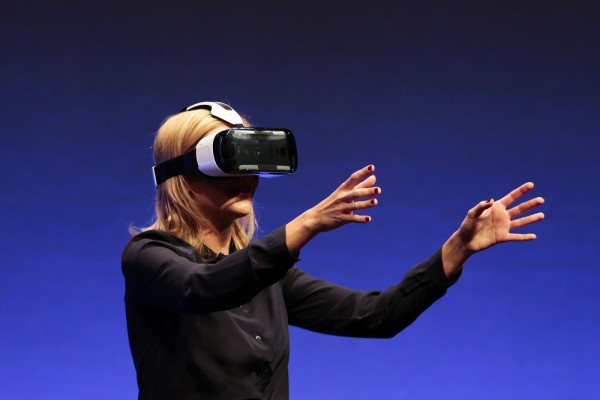Virtual reality now being used for pain intervention and PTSD treatment
06/23/2018 / By Zoey Sky

A well-written story can be compelling, regardless of the form it takes. A good book or movie can help you escape, even if only for a couple of hours.
But can such a story help reshape your lived experience?
While this sounds like something out of the newest sci-fi movie, an identical concept is being used to “study how virtual reality [VR] can treat real-life pain.”
Aside from its recreational use in video games and other forms of media, virtual reality can be a tool that might help address physical and mental stress. Individuals suffering from acute pain can even use VR to distract their minds. It can also help people suffering from trauma relive triggering situations in a supported way.
For Andrea Stevenson Won, director of the Virtual Embodiment Lab and a communications professor at Cornell University, she and her team examined how physical and social interactions in mediated environments can help change an individual’s perception.
“I’m interested in the idea that you can transform your movements – see yourself doing something other than what you’re actually doing in real life – and this could help relieve chronic and acute pain,” she added. (Related: Virtual pain relief: Researchers believe video games can reprogram your brain, or at least distract you.)
Won’s research on chronic pain involves two different types of afflictions:
- Complex regional pain syndrome — A unique form of chronic pain that often develops following a heart attack, injury, stroke, or surgery. However, the pain tends to be out of proportion with the severity of the initial injury.
- Persistent idiopathic facial pain — A similar condition, this form of pain occurs in the face.
Both afflictions can be addressed by letting patients experience what they would in normal conditions: visual feedback on their actions. Through virtual reality, patients can observe themselves moving in ways that they can’t in real life. The participants’ brains will then use the feedback to recreate their body image.
Won explained that this “bogus” visual feedback could be used to alter how individuals with chronic conditions move. Ideally, tricking the brain with virtual experiences can produce results that will offer lasting relief in the real world.
Testing on virtual reality treatments for pain intervention, trauma, and post-traumatic stress disorder (PTSD) has shown that the methods are effective. In fact, researchers are hopeful since technology is becoming more accessible and affordable. The success of such treatments has also allowed researchers to look into various methods that can be used to treat different conditions.
Won shared that even if your experiences are good or bad, they change who you are as a person. She concluded, “As virtual reality becomes a more common experience, there are more opportunities to use the technology to benefit our health.”
Fast facts on complex regional pain syndrome
- Complex regional pain syndrome (CRPS) is a chronic pain condition that usually involves one limb (e.g., an arm, hand, leg, or foot) after an injury.
- A person can develop CRPS if they suffer damage to their peripheral and central nervous systems.
- The symptoms of CRPS include prolonged/excessive pain and changes in skin color, temperature, or swelling in the affected limb.
- CRPS symptoms may vary in severity and duration. However, some cases are mild and resolve on their own. Patients with severe cases of the condition may not recover and have a permanent disability.
- CRPS is more common among women, but the condition may occur in anyone at any age. It is rare in the elderly. Only a handful of children younger than 10 years old and almost no children younger than five years old develop CRPS.
Read more articles about the possible applications of virtual reality at VirtualReality.news.
Sources include:
Tagged Under: Brain, chronic pain, mental health, mind body science, neurology, Occupational Therapy, pain management, pain relief, physical health, physical therapy, PTSD, social interactions, stress, technology, therapy, trauma recovery, Virtual reality, visual feedback


















